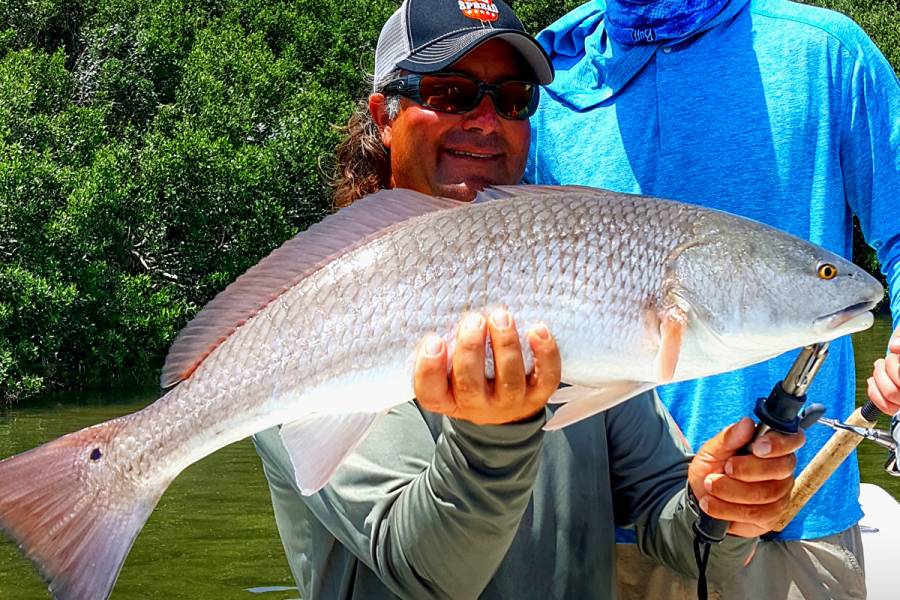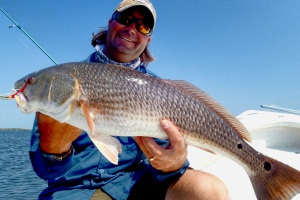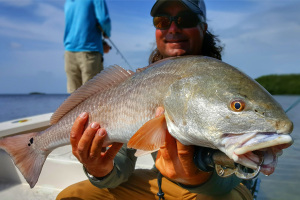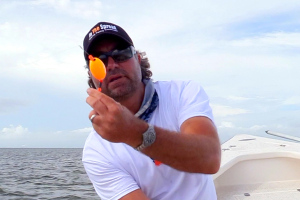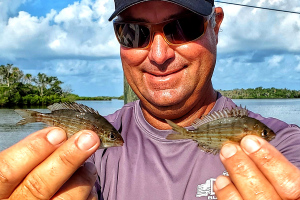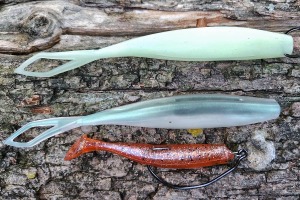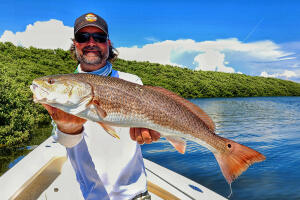Explore redfish regulations with our comprehensive guide. Learn about the crucial state and federal laws, effective fishing techniques, and the importance of conservation to ensure the sustainability of this prized species. Perfect for anglers eager to responsibly enjoy the thrill of redfish fishing.
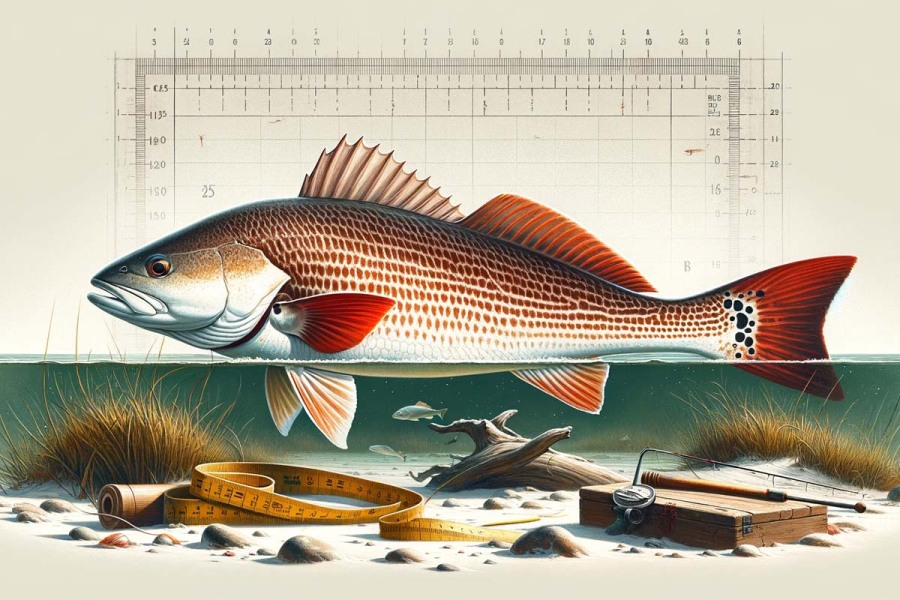
Redfish Regulations by State
Summary Table
- Catching Redfish: Learn the characteristics, habitat, baits, lures and fishing techniques
- Federal Redfish Regulations: Overview of U.S. federal guidelines.
- State Redfish Regulations: Detailed information for Texas, Louisiana, Mississippi, Alabama, Florida, Georgia, South Carolina, North Carolina, Virginia.
- Fishing Techniques: Tips on how to catch redfish, including redfish rigs, lures, and baits.
- Conservation Efforts: Importance of regulations for sustainability.
Understanding Federal Redfish Regulations
- In the coastal embrace of state waters, extending from the shore to a modest 3 nautical miles offshore, each state unfurls its own tapestry of regulations for redfish fishing. These regulations intricately detail size limits, bag limits, seasons, and gear restrictions, painting a picture as varied as the states themselves.
Learn More About Catching Redfish
State Specific Regulations: A Closer Look
In the vast and varied expanse of the redfish's domain, stretching from the sun-baked shores of Texas to the misty coastlines of Virginia, each state stands as a guardian of its own aquatic frontier. In this intricate tapestry, Texas, Louisiana, Mississippi, Alabama, Florida, Georgia, South Carolina, North Carolina, and Virginia each weave their own set of rules, as unique and diverse as the waters they oversee.
The Role of Conservation in Redfish Fishing
The diverse regulations across states reflect a commitment to maintaining sustainable redfish populations. These rules are not only meant to provide optimum yields for recreational anglers but also to prevent overfishing and ensure the longevity of the species.
Texas
- A redfish, in its journey through the Texan waters, must measure a proud 20 inches at the least, but dare not exceed the grand length of 28 inches, to be deemed worthy of harvest. This decree, known among anglers as the slot limit, ensures both the vigor and sustainability of the species.
- The daily bounty for each seeker of redfish is set at a triumvirate; no more than three redfish per person may be claimed from the vast Texan seas each day.
- In the span of a license year, an angler may lay claim to one red drum surpassing the maximum length, provided it is honored with a Red Drum Tag, properly completed in all its formal glory. Furthermore, a second leviathan of the deep, also exceeding the prescribed length, may be rightfully claimed under the auspices of a Bonus Red Drum Tag, equally completed with due diligence. These exceptional specimens, when claimed under the authority of these tags, may be proudly added to one's daily bag and possession limit, as stated in this section.
- In a nod to the digital age, these tags must be reported using the My Texas Hunt Harvest (MTTH) mobile or online app. This modern twist allows for the digital affirmation of one's catch, replacing the traditional physical affixation of tags.
Louisiana
- In the waters of Louisiana, a redfish must attain a noble length of at least 16 inches, yet must not exceed the majestic span of 27 inches, to be deemed fit for harvest. This careful measurement ensures the species' continuity and the angler's honor.
- The bounty of the sea, as per these rules, permits a daily bag limit of 5 fish per intrepid angler.
- Within this daily quota, the laws of Louisiana graciously allow for one redfish to surpass the established slot limit, a testament to the angler's skill and fortune.
- For those who embrace the saltwater's call, there exists a provision to possess a two-day’s bag limit of red drum upon the land. Yet, in the spirit of conservation and fairness, no individual may possess more than the daily bag limit in any single day or during the act of fishing, or while navigating the waters. The exception to this rule is for the hardy souls aboard a trawler engaged in the noble act of commercial fishing for a continuous period extending beyond 25 hours.
- In the vast federal waters, the take or possession of red drum stands as a prohibited act, a decree to safeguard the species beyond state boundaries.
- For those seeking further enlightenment or clarity on these regulations, the official website of the Louisiana Department of Wildlife and Fisheries stands as a beacon of knowledge, ready to guide and inform.
- Thus, these are the decrees set forth by Louisiana, a state wise in its stewardship of the aquatic realms, ensuring that the red drum thrives and the angler respects the delicate balance of this underwater world.
Mississippi
- To ensure the balance of nature and sport, Mississippi mandates that a redfish must measure a minimum of 18 inches and may grow no larger than 30 inches to be considered a legal prize. This careful stipulation ensures the vitality of the species and the integrity of the sport.
- The daily bag limit, set with a keen eye on conservation and sportsmanship, allows for 3 redfish per person. This rule is a constant reminder of the responsibility each angler bears towards the aquatic world.
- In a gesture that honors the skill and patience of recreational anglers, Mississippi graciously permits the retention of one redfish exceeding 30 inches each year. This singular allowance is a nod to the exceptionalism that occasionally graces the fishing line, a rare trophy in the angler's quest.
Alabama
- In Alabama, the pursuit of redfish, those crimson denizens of the deep, knows no seasonal bounds. The state, in its wisdom, declares no closed season for redfish, thus allowing anglers to seek these prized creatures year-round, in a timeless dance of human and nature.
- The redfish, to be deemed worthy of retention in Alabama's waters, must navigate the measure of length with precision. They must be no less than 16 inches and no more than 26 inches. This range, known among anglers as the slot limit, is a testament to Alabama's commitment to sustainable fishing practices.
- The daily bag limit, a rule set to ensure both sport and conservation, is fixed at 3 fish per person per day. Of this trio, only one may claim the honor of surpassing the 26-inch mark, a rule that speaks to the rare and valued nature of the larger redfish.
- In a declaration of respect and protection, Alabama designates the redfish as a game fish. This status means that any redfish caught within the state's waters are to be cherished as sport, not commerce, and thus cannot be bought or sold.
- To engage in this noble pursuit, Alabama mandates that each angler must be armed not just with rod and reel, but with a valid saltwater fishing license. This requirement is a nod to the responsibility each angler bears in the stewardship of the state's marine resources.
Florida
- The state of Florida, in its wisdom, is intricately divided into nine redfish management regions. Each of these regions, distinct in its ecological character, adheres to its own set of regulations, subject to annual review.
- The regulations dictate that the redfish, a creature of both beauty and resilience, must be no less than 18 inches and no more than 27 inches in total length to be considered a legal catch. This rule, ensuring the sustainability of the species, requires anglers to measure their catch with precision and care.
- In most of these regions, the daily bag limit for redfish stands at one fish per person, a rule that echoes the balance between man's ambition and nature's bounty. However, in the Northeast region, this limit is generously extended to two fish per person per day.
- The vessel limit for redfish, another cog in the intricate machinery of conservation, varies by region, ranging from two to four fish per vessel. This stipulation ensures that the seas do not bear the brunt of unbridled harvest.
- When embarking on a for-hire trip, captains and their crew are honor-bound not to retain a bag limit of redfish, a regulation that speaks to the ethics and responsibility of those who lead such expeditions.
- Once ashore, the off-the-water transport limit is set at four fish per person. This limit, applicable when traveling by vehicle away from the fishing site, underscores the importance of restraint even away from the water’s edge.
- In the Indian River Lagoon region, a unique decree prevails—redfish fishing is strictly catch-and-release, a testament to the delicate ecological balance of this region.
- Florida, in its commitment to preserving the redfish, prohibits their commercial harvest, ensuring that these creatures remain a resource for sport and recreation, not commerce.
- The legal gear for pursuing redfish is defined with precision: hook and line, cast nets, and artificial lures are permitted, while spearing, gigging, bowfishing, snatch hooking, and the use of multiple hooks with natural bait are forbidden—a reflection of the state's dedication to ethical fishing practices.
Georgia
- The quest for redfish is open to intrepid anglers all year round. This perpetual season offers endless opportunities for those seeking the thrill of the catch.
- The daily limit and possession limit for redfish is set at 5 fish per person, a rule that speaks to the balance between the angler's ambition and the sustainability of the species. Notably, there is no limit for a boat, allowing for collective efforts in this aquatic pursuit.
- The size limit for redfish is carefully defined, with only those measuring between 14 and 23 inches in total length deemed fit for capture. This regulation ensures the protection of both juvenile and mature specimens, echoing the thoughtful stewardship seen in Heinlein's worlds.
- In Georgia, redfish are revered as gamefish, a status that dictates they may only be pursued with pole and line (rod/reel).
- To partake in this noble endeavor, anglers are required to possess a valid saltwater fishing license. This mandate serves as a reminder of the responsibility each individual holds towards the conservation and respect of Georgia's marine ecosystems.
South Carolina
- The quest for redfish in South Carolina is a year-round endeavor, with the fall months heralded as the prime time for this pursuit. This open season, reminiscent of the boundless adventures in Heinlein's tales, offers a continuous opportunity for anglers to engage with these prized fish.
- However, the art of gigging for redfish is bound by temporal limits. From December 1st through February 28th, the use of gigs is strictly prohibited, a regulation that ensures the protection of the species during critical periods.
- The methods permitted for capturing redfish are clearly defined: only rod & reel and gig are allowed. This rule underscores the importance of traditional and ethical angling practices.
- The harvesting of redfish from federal waters is expressly forbidden, a mandate that aligns with the broader theme of conservation and respect for marine life.
- In South Carolina, redfish must measure between 15 and 23 inches in length to be legally retained. This size limit, coupled with a daily bag limit of 2 fish per person, strikes a balance between the angler's pursuit and the sustainability of the redfish population.
- In addition to adhering to these redfish limits, anglers are also required to obtain a fishing license.
North Carolina
- Size limit: In the waters of North Carolina, the redfish, a species both resilient and revered, must navigate a specific range of existence to be considered a legal catch. Only those measuring between 18 and 27 inches in total length are deemed suitable for harvest. This rule ensures the health and sustainability of the species.
- Bag limit: The daily allowance for redfish is set at one per person. This regulation, a testament to the balance between human ambition and the natural world's limits.
- License: To engage in the pursuit of redfish, a valid North Carolina coastal fishing permit is required.
Virginia
- To embark on the pursuit of redfish in Virginia, one must be equipped with a valid saltwater fishing license. This requirement underscores the importance of regulation and responsibility in the fishing endeavor.
- The size limit for redfish is strictly defined as 18 to 26 inches in total length. This specific range ensures that only redfish of a certain maturity are harvested, thereby promoting sustainable fishing practices.
- The daily bag limit for redfish is established at 3 per person per day.
- The redfish season in Virginia is generously open all year. This perpetual opportunity allows anglers to seek redfish at any time of the year, providing a continuous interplay between human and nature.

Navigating Regulations: A Vital Part of Redfish Fishing
Understanding and adhering to the specific regulations of the area you plan to fish in is crucial. This not only ensures legal compliance but also contributes to the conservation efforts for redfish.
Rachel Best In The Spread, Author
